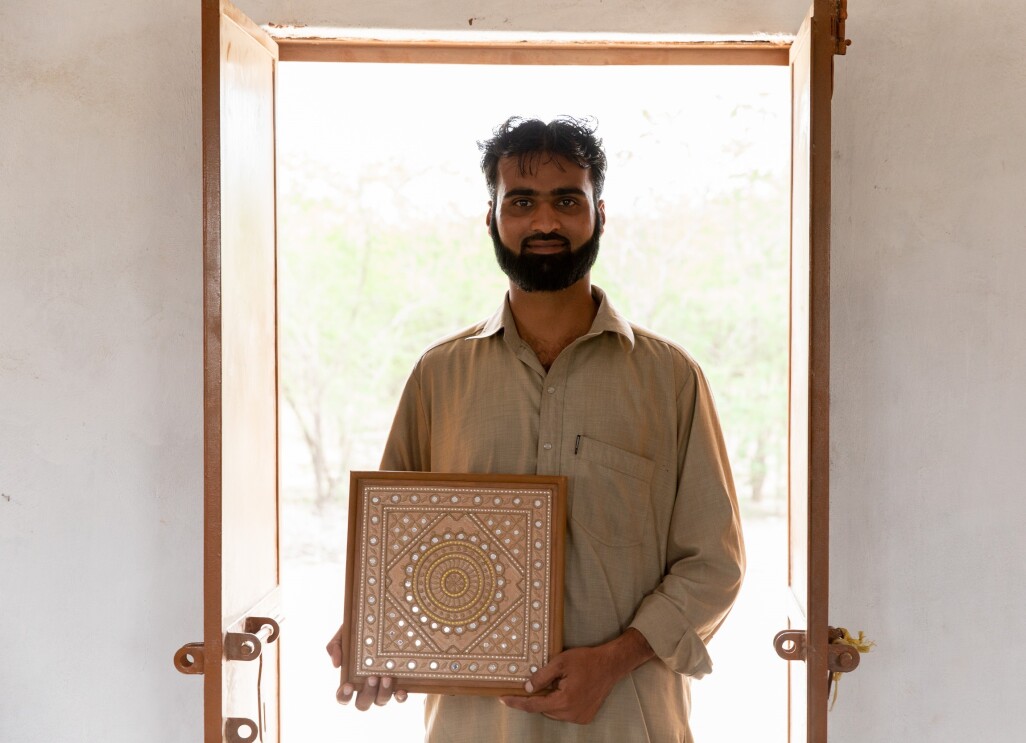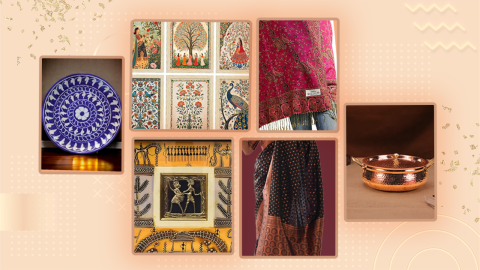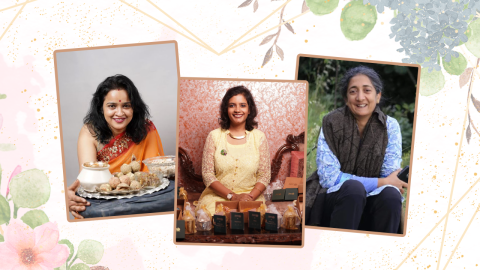The pot with the sticky castor oil was poured out on a stone as organic colors were mixed into it quietly. This was soon wrapped on a needle and the six artisans began working on a fabric, sketching designs in a dexterous fashion. Rogan art was coming alive and in pin drop silence. Cut to the flower unit, which is used to roll organic incense sticks, or the small one room studio used to make mud work art or even the vast tracts of land on which the dyed Ajrakh fabric is kept to sun dry or the looms in individual homes.
There is a quiet perseverance in the atmosphere. There is the sound of silence.
Through the Share The Craft series, we have travelled across the length and breadth of India and have got up close with a variety of art forms and have been inspired by them too. And just as the craft is diverse, there is an underlying unifying factor - the force that binds the art together. And this force is undoubtedly the quiet almost stoic resilience of the artisans and their undying passion for the art. Wherever we went, we observed that artisans were people of few words, but their passion and their craft spoke volumes.
When they spoke it was almost always on the art and that it should survive. Age did not matter - the young and old alike were so humble in their skills that it almost was dismissive. Shy to be on camera, the common comment was "showcase our art...that is enough!" So while they spread the art, we decided we should spread the good word!
Let’s hear it from some of them, to get a glimpse of their selfless passion and their quiet conviction.
Enjoy the art

“If the people who work for me, don’t enjoy themselves at work, they will not be able to work creatively. Ajrakh is a visual art form that involves a rather laborious technique. Apart from having a creative mind, you have to experience the art to enjoy learning it and then creating it. That’s how I learned.”
Sufiyan Khatri, master artisan of Ajrakh
Do it with conviction

"Currently, I am the only one in my village doing this, but just like I learnt, there are people in my village who are eager to learn. I am the only one in my village to use technology to sell an art form and comfortably from remote Siniyado. So one thing my village folk know is that if you do this art with conviction and hard work, there is money in this art, is art mein profit hai!” Maji Khan, Mudwork artisan
Bridging the tech-talent divide

"I knew I had to bridge the gap between the retail industry and the manufacturers. But how and when was the question. I then read about Amazon Karigar and that was when I knew I had to be on this platform. I knew we were losing out on weavers who weave this print for lack of traditional tools, to lack of skills, to low incomes. This was my chance to revive the art and make its presence in online market.” Bhaskar, Ikkat weaver
When age is no bar to learn

"I was 22 years old and had just completed my education. But if I needed the art to survive and of course improve our monetary status, I had to think beyond my family home. So I started a new factory near our house and started teaching many people in and around our neighbourhood about the various processes of the art form. Around this time I also got married and during the time when orders were high, my wife Sharada decided to become an active participant in the business." Girdhar, makes Blue Art Pottery
These are just glimpses of how artisans think. But as you browse through the Amazon Karigar store and see wonderful pieces of art handcrafted with love, you know it’s not just an art form, it’s an artisan’s voice speaking through the art.











